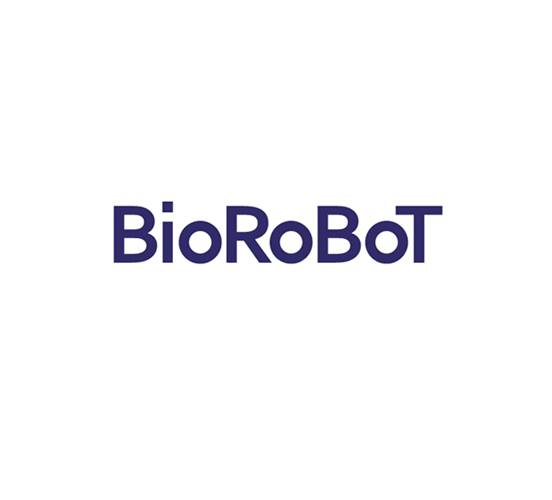The word ‘robot’ evokes images of मानव-like manmade metallic machine (humanoid) designed and programmed to automatically perform some tasks for us. However, robots (or bots) can be of any shape or size and can be made of any material (including biological materials such as living cells) depending on design and functional requirements. It may not have any physical form as in the case of सिरी or alexa। रोबोटहरू तर्कसंगत रूपमा डिजाइन गरिएका कलाकृतिहरू वा मेशिनहरू हुन् जसले स्वायत्तता प्रदर्शन गर्दछ र विशिष्ट कार्यहरू गर्दछ।
Biological robots (or biobots) use living कक्षहरू or tissues as fabrication material. Like all robots, biobots also are programmable machines, display autonomy and perform specific tasks. These are a special class of active living and motile synthetic structures.
जीवित तन्तुहरू per se, are not robots. They are parts of animals. The living कक्षहरू become robots when they are liberated from the normal constraints and programmed into desired form and function by artificially combining and shaping the cells to display specific behaviour.
xenobots सन् २०२० मा प्रयोगशालामा भ्यागुता नामक प्रजातिको भ्रूणको अण्डाकोष प्रयोग गरेर सिर्जना गरिएको पहिलो पूर्ण जैविक बायोबोटहरू थिए। Xenopus laevis (यसैले नाम Xenobots)। यो पहिलो जीवित, स्व-मरम्मत, आत्म-प्रतिकृति कृत्रिम जीव थियो। जीवित कोशिकाहरूलाई निर्माण ब्लकको रूपमा प्रयोग गरियो जुन भ्रूणको बाँकी सामान्य अवरोधहरूबाट मुक्त गरी कृत्रिम जीवनको नयाँ रूप जन्माउनको लागि जसको आकार विज्ञान र सुविधाहरू कृत्रिम रूपमा 'डिजाइन' थिए। Xenobot यसरी, एक जीवित सिंथेटिक जीव थियो। Xenobots को विकासले देखाएको छ कि उभयचर भ्रूणबाट व्युत्पन्न कोशिकाहरू प्राकृतिक अवरोधहरू जारी गरेर इच्छित रूप र कार्यमा प्रोग्राम गर्न सकिन्छ। यद्यपि, यो थाहा थिएन कि बायोबोटहरू गैर-उभयचर वा वयस्क कोशिकाहरूबाट सिर्जना गर्न सकिन्छ।
Scientists have now reported successful construction of biobots using adult cells from non-embryonic मानव tissue with capabilities beyond Xenobots. This biobot has been named ‘एन्थ्रोबोट्स’ because of its मानव मूल।
Since Xenobots were derived from amphibian embryonic cells by moulding cells individually, the research team began with testing if ability to give rise to biobots is limited to these amphibian cells or, other non-amphibian, non-embryonic adult cells also can generate biobots? Further, if the seed cells need to be necessarily sculpted individually to generate biobots or if coaxing of initial seed cells also can lead to self-construction of biobots? For this, instead of embryonic tissues, the researchers used adult, somatic cells derived from मानव lung epithelium and were able to generate novel, multicellular, self- constructing, motile living structures without manual sculping or using any external form-giving machinery. The method used is scalable. Swarms of biobots in parallel were produced which moved via cilia- driven propulsion and lived for 45–60 days. Interestingly, it was also observed that Anthrobots moved across breaks in neuronal monolayers and induced efficient healing of defects in vitro.
Anthrobots को संश्लेषण is significant because it demonstrates that plasticity of cells to give rise to biobots is not limited to embryonic or amphibian cells. It has shown that adult somatic मानव wild cells without any genetic modification can form novel biobots without any external form-giving machinery.
एन्थ्रोबोट्स Xenobots मा सुधार र प्रासंगिक टेक्नोलोजी मा एक उन्नति हो जुन क्लिनिकल प्रयोगहरु को लागी जटिल ऊतकहरु को उत्पादन को लागी महत्वपूर्ण प्रभाव छ। पुनर्जन्म औषधि। भविष्यमा, प्रत्येक बिरामीको लागि व्यक्तिगत रूपमा एन्थ्रोबोटहरू उत्पादन गर्न र कुनै पनि प्रतिरक्षा प्रतिक्रियालाई प्रेरित नगरी शरीरमा तैनात गर्न सम्भव हुन सक्छ।
***
सन्दर्भ:
- ब्ल्याकिस्टन डी। एट अल 2023. जैविक रोबोटहरू: एक उदीयमान अन्तरविषय क्षेत्र मा परिप्रेक्ष्य। सफ्ट रोबोटिक्स। अगस्ट २०२३। ६७४-६८६। DOI: https://doi.org/10.1089/soro.2022.0142
- गुमुस्काया, जी। et al। 2023. Motile Living Biobots Self-Construct from Adult मानव Somatic Progenitor Seed Cells. Advanced Science 2303575. published: 30 November 2023 DOI: https://doi.org/10.1002/advs.202303575
- Tufts University 2023. News – Scientists Build Tiny Biological Robots from मानव कोषहरु। https://now.tufts.edu/2023/11/30/scientists-build-tiny-biological-robots-human-cells
- इब्राहिमखानी मो.आर. र लेभिन एम।, २०२१। सिंथेटिक लिभिङ मेसिनहरू: जीवनमा नयाँ विन्डो। iScience परिप्रेक्ष्य। भोल्युम २४, अंक ५, १०२५०५, मे २१, २०२१। DOI: https://doi.org/10.1016/j.isci.2021.102505
***






































